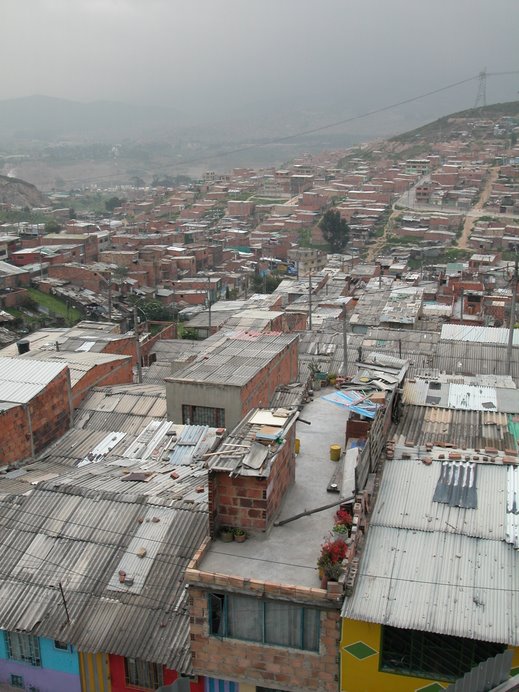 |
Thousands of motorcyclists protesting the planned law prohibiting male passen.gers
clogged streets in central Bogotá the other day |
In most places, the sight of a motorcycle carrying a passenger is probably a bit charming, and demonstrates at least a sort of fuel efficiency.
In Colombia, however, this sort of ride sharing has a brutal history. In the heyday of the narcos,
professional assassins used motorcycles' back seats as work platforms. Today, those sort of killings are much less common. But police say that motorcycle passengers, called
parrilleros, commit a huge portion of muggings and other street crimes.
 |
Motorcyclists carry passengers of uncertain gender
in central Bogotá. |
The solution? Bogotá plans to prohibit the carrying of passengers on motorcycles with engines larger than 125 cubic centimeters in a huge part of the central city. Not all passengers will be banner, however: Only male ones.
Last night, thousands of motorcyclists jammed Bogotá streets in protest. However, the same rule has been implemented in other Colombian cities with successful results, according to police.
In a politically correct nation such as the U.S., such a rule would likely get tossed out for gender discrimination, or be challenged by same-sex couples who'd complain protest that only heterosexual men could carry their partners with them.
 |
| Will the new measure make traffic jams worse? |
However, the measure reflects a reality: The overwhelming majority of violent crimes are committed by males. Until women become more ambitious criminally, it's fine to discriminate in their favor.
But this all begs the question of how police will enforce this rule, particularly on cold days when motorcycle riders are bundled up and apparently genderless. Will male passengers take to wearing spiked heels and wigs with long, blond hair flowing out from under their helmets?
By Mike Ceaser, of
Bogotá Bike Tours



























































